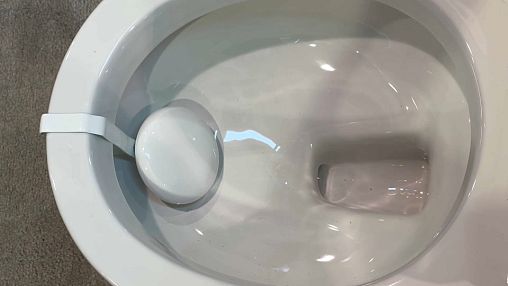What to do if someone is in cardiac arrest -- article with video
若遇到有人心臟驟停該怎麼辦 – 原文含影片
Health
If you suspect that someone has gone into cardiac arrest, there are some simple steps you can take right away that could mean the difference between life and death. About 70% to 90% of people who go into cardiac arrest in the US die before they get to a hospital because the people around them don’t always know how to help. Cardiac arrest is when a person’s heart abruptly stops beating. If you see someone with symptoms of cardiac arrest, call 911 immediately. You want to get professional help there as quickly as possible. When the heart can’t pump blood to the brain and the lungs, the person may become brain-damaged or die within minutes.
--from CNN (article with video)
如果你發現周遭有人心臟驟停(cardiac arrest),這裡有一些可以立即實行的簡單步驟,你所採取的行動或許能造就他是生存或死亡兩種不同的結局。美國約有70%-90%的心臟驟停患者在被送往醫院之前就已經被判定死亡,這是因為當時周遭的人不一定知道該如何提供幫助。心臟驟停是指當一個人的心臟突然停止跳動。若你發現到有人出現心臟驟停的症狀,請立即撥打911(臺灣為119)。你需要在短時間內盡快得到專業人士的幫助。當心臟無法將血液泵送到大腦和肺部時,該人士很可能會在幾分鐘內出現腦損傷或死亡。
--摘錄翻譯自CNN(原文含影片)
This smart toilet analyses your urine to give health advice and even help you get pregnant -- article with video
這款智能馬桶可以分析尿液,提供健康建議,甚至協助使用者懷孕 – 原文含影片
Health
The CES tech show (known as the Consumer Electronics Show) in Las Vegas, the US, is full of health gadgets this year. Connected devices are headed everywhere, even to the toilet bowl. French firm Withings is debuting U-Scan, an at-home urine lab that provides nutrition tips and can tell women where they are in their menstrual cycle. "There is a mono-user device and we have integrated a feature called stream ID, we are able to actually recognize and identify the user who is urinating on the product, so we will only collect the urine when it's you using the product," explained Withings' Inna Ndaw.
--from Euronews (article with video)
今年在美國拉斯維加斯舉行的消費性電子展 (the Consumer Electronics Show,CES科技展)上的健康產品隨處可見。互聯網鏈接設備無處不在,甚至是馬桶。法國公司Withings所推出的U-Scan是一種家庭尿液檢測室,可提供使用者營養提示,並能通知女性用戶月經週期。「我們在一個單用戶裝置整合了一個名為Stream ID的功能介面,我們能夠準確地辨識及分析目前在產品上排尿的使用者,因此我們只會收集指定用戶的尿液。」Withings 的 Inna Ndaw 解釋道。
--摘錄翻譯自Euronews(原文含影片)
Hydra: The Greek island that banned wheels
伊茲拉島: 禁止所有車輛的島嶼
Culture
On my final morning in Hydra, I woke up early and ambled down to the waterside to watch the weekly deliveries. Docked at the stone harbour walls was a barge that brings over islanders' orders from the mainland. Patiently queuing to board the boat were several donkeys. Groups of three or four would climb aboard then return a few minutes later bearing household items, packages and even bags of cement in woven baskets strapped to their backs. The donkey drivers – all moustachioed island men – quickly led their charges away up alleys leading off the port and out of sight. Hydra's archaic reliance on donkeys for transport stems from a 1950s presidential decree that is intended to preserve the Greek island's architecture and character. It includes a rule that wheeled vehicles – cars, motorbikes and even bicycles – cannot be used there. Since the town is built on steep, amphitheatre-like hills rising from its horseshoe-shaped harbour, donkeys are the only form of transport that can climb the steep steps and narrow alleyways up to many residents' homes.
--from BBC Travel
在希臘伊茲拉島 (Hydra) 的最後一個早晨,我早早醒來,漫步到水邊觀看送貨情況。停靠在海港圍牆上的是一艘駁船,它從大陸帶來島民的訂單。幾頭驢耐心地排隊上船。一組一組的人爬上船,幾分鐘後又背著編織籃回來。籃內裝滿了居家用品、包裹,甚至有水泥。留著小鬍子的驢夫島民迅速帶著他們的驢隊沿著通往港口的小巷離開,消失在視線之外。伊茲拉島依賴驢子代步的古老傳統源於1950年代的一道總統命令,旨在保護希臘島嶼的建築和特色。這當中有一條規定禁止所有車輛 「 包括汽車、摩托車、自行車 」 都不能在伊茲拉島使用。由於該鎮建在陡峭、圓形劇場般的山丘上,驢子是唯一可以爬上陡峭的台階和狹窄的小巷,進而到達居民家中的交通工具。
--摘錄翻譯自BBC Travel
The Deq tattooist: Preserving the ink of a disappearing culture
Deq 刺青師:保存正在消失的文化
Culture
When she was 20 years old, Fatê Temel grabbed a surgical needle, balancing it between her index finger and thumb, and dipped its point in a mixture of lampblack and breast milk. She lifted the needle point to her face. Turning to a mirror hanging on a wall in her family’s home in the village of Derik in Turkey’s southeastern province of Mardin, she began poking the skin on her chin. It was the very first time she gave deq - traditional tattoos that had once been common among Kurds. She is one of the only artists left in Turkey preserving this ancient tattooing culture. “Every tattoo has a meaning,” Temel says. “For the Kurds, we had our own particular meanings and associations with all of these symbols and motifs – which connect us to a past that is being forgotten,” she adds. “Deq represents to me another aspect of our disappearing culture. And it is my duty to ensure this tradition is preserved."
--from Al Jazeera
20歲時,Fateê Temel在土耳其東南部馬爾丁省德里克村的家中抓起一根手術針,將它放在食指和拇指之間然後將針浸入燈黑和母乳的混合物中。她接著把針舉到臉邊,轉向掛在牆上的一面鏡子,開始戳自己下巴上的皮膚。這是她第一次刺青(deq) - 曾經在庫德族人中很常見的傳統紋身。她是土耳其少數致力於保留這種古老紋身文化的藝術家之一。「每個紋身都有其意義,」Temel說。「對於庫德族人來說,這些符號和圖案都有其獨特的含意和與價值 – 它將我們族人與我們被遺忘的過去聯繫起來,」她補充道。「對我來說,Deq代表了我們族人正在消失的文化。我有責任確保這一傳統能被繼續傳承下去。」
--摘錄翻譯自Al Jazeera
FDA no longer needs to require animal tests before human drug trials
美國食品藥物管理局不再要求藥物在人體試驗前進行動物試驗
Sciences
New medicines need not be tested in animals to receive U.S. Food and Drug Administration (FDA) approval, according to legislation signed by President Joe Biden in late December 2022. The change—long sought by animal welfare organizations—could signal a major shift away from animal use after more than 80 years of drug safety regulation. The director of research and regulatory policy at the Center for a Humane Economy, a nonprofit animal welfare organization and key driver of the legislation, Tamara Drake says, “it’s a win for industry. It’s a win for patients in need of cures.” But pro-research groups are downplaying the law, saying it signals a slow turning of the tide—not a tsunami that will remake the drug approval process overnight. Jim Newman, communications director at Americans for Medical Progress, which advocates for animal research, argues non-animal technologies are still “in their infancy” and won’t be able to replace animal models for “many, many years.”
--from Science news
據拜登總統於2022年12月下旬簽署的法案,新藥無需在動物身上進行測試,來取得美國食品藥物管理局(FDA)核可。此一動物福利組織引頸期盼的變化可能象徵著一個使用動物80多年後的藥物安全監管重大轉變。非營利性動物福利和法案的主要推動組織「人道經濟中心」的研究和監管政策主任Tamara Drake說:「這是產業的勝利,是有治療需求之患者的勝利。」但支持研究的團體對此法輕描淡寫,稱它象徵潮流的逐漸轉變,而非一夕間重塑藥物審核程序的海嘯。提倡動物研究的Americans for Medical Progress傳播總監Jim Newman認為非動物技術「處於起步階段」,即便多年後,尚無法取代動物模式。
--摘錄翻譯自Science news
Some Dinos may Have Been as Brainy as Modern Primates, Controversial Study Argues
具爭議性的研究認為:一些恐龍可能同現代靈長類動物一樣聰明
Sciences
A controversial new study suggests some dino brains were as densely packed with neurons as those of modern primates. If so, that would mean they were very smart—more than researchers previously thought—and could have achieved feats only humans and other very intelligent animals have, such as using tools. The findings, reported two weeks ago in the Journal of Comparative Neurology, are making waves among paleontologists on social media and beyond. The neuroanatomist at Vanderbilt University, Suzana Herculano-Houzel reports, “ the T. rex, with its brain weighing one-third of 1 kilogram, had an estimated 3.3 billion cortical neurons—a higher density than baboons.” Some are applauding the paper as a good first step toward better understanding dinosaur smarts, whereas others argue the neuron estimates are flawed, undercutting the study’s conclusions.
--from Science news
一項有爭議的新研究顯示,一些恐龍的大腦與現代靈長類動物的神經元一樣密集。假使如此,則意味著它們比研究人員之前所認為的要聰明得多—且能做到只有人類和其他非常聰明的動物才能做到的壯舉,如使用工具。兩週前發表在《比較神經學雜誌》上的研究結果,在社交媒體及其他領域的古生物學家中掀起波瀾。Vanderbilt大學的神經解剖學家Herculano-Houzel報告指:「霸王龍的大腦重量為3分之1公斤,估計有33億個皮質神經元—密度高於狒狒。」有些人稱讚這篇論文是朝著更加理解恐龍智慧所邁出良好的第一步,而另一些人則認為對神經元的估算有瑕疵,從而削弱了研究結論。
--摘錄翻譯自Science news
